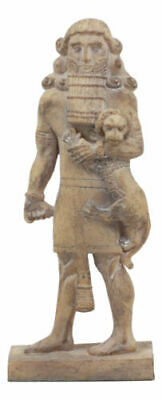-40%
Persian Farvahar Wall Decorations Ahura Mazda Zoroastrian Iran Cyrus the Great
$ 182.5
- Description
- Size Guide
Description
One New Gold Color Persian Farvahar (Farohar) Wall Decorations,Ahura Mazda
, Zoroastrian,
2500 B.C.
Achaemenian, Iran.
Color
: Three colors available : Copper
$
320, Gold
$
344, Gold & Black
$
375
Weight
: Approx. 2 Ibs ( 900 grams )
Dimension
: 23”x 10.5” Thickness ¼” ( 57cm×26 cm - Thickness = .6cm )
Material
: Sturdy Resin
Free Gift :
Two 5" Hakhamanesh Soldiers as shown in the last picture ( Worth
$
19 )
Wall Installation : You may have to use TWO pins inside the hook to maintain proper balance.
Please Note that back of the item may or may not be painted. The item sits on the wall and so the back paint is actually irrelevant.

Interpretation of the Farvahar
The Farvahar is one of the best-known symbols of Zoroastrianism, the state religion of ancient Persia.
The symbol dates back to thousands of years ago. It is made up the following parts:
The Farvahar’s
Face
resembles the face of human being and therefore, indicates its connection to mankind. There are two wings which have three main feathers. These main feathers indicate three symbols of 'good reflection,' 'good words,' and 'good deed,' which are at the same time the motive of flight and advancement.
The
Lower part
of the Farvahar consists of three parts, representing 'bad reflection,' 'bad words,' and 'bad deed' which causes misery and misfortune for human beings.
There are
Two loops
at the two sides of the Farvahar, which represent
Sepanta Minu,
and
Angra Minu.
The former is directed toward the face and the latter is located at the back. This also indicates that we have to proceed toward the good and turn away from bad.
The
Circle
in the middle of the Farvahar’s trunk indicates that our spirit is immortal, having neither a beginning nor an end.
One
Hand
of the Farvahar points upwards, showing that we have to struggle to thrive.
The
Other hand
holds a ring. Some interpreters consider that as the ring of covenant, representing loyalty and faithfulness which is the basis of Zarathustra's philosophy.
In present-day Zoroastrianism, the Farvahar is said to be a reminder of one's purpose in life, which is to live in such a way that the soul progresses towards frasho-kereti, or union with
Ahura Mazda
, the supreme divinity in Zoroastrianism.
Not only Zoroastrians, but patriotic Iranians of all creeds use the Farvahar, and various simplified versions of the
Persepolis
standard appear in carpet stores, restaurants, advertisements, and other Iranian concerns all around the world.
From the start of the 20th century the
Farvahar
icon found itself in public places and became a known icon amongst all Iranians. The
Shahname
by
Ferdowsi
is Iran's national epic and contains stories (partly historical and partly mythical) from pre-islamic Zoroastrian times. The tomb of Ferdowsi which is visited by numerous Iranians every year, contains the Farvahar icon as well.
After the Islamic Revolution of 1979 the Lion and Sun which was part of Iran's original national flag had been banned by the government from public places in order to prevent people from being reminded of life prior to the revolution, nevertheless Farvahar icons were not removed. As a result, the Farvahar icon became a national symbol amongst the people which became somewhat tolerated by the government compared to the Lion and Sun. The Farvahar is the most worn pendant amongst Iranians and has become a national symbol rather than a religious icon, although it's Zoroastrian roots are certainly not ignored.
In present-day Zoroastrianism, the
Farvahar
is said to be a reminder of one's purpose in life, which is to live in such a way that the soul progresses towards union with
Ahura Mazda
, the supreme divinity in Zoroastrianism.


















